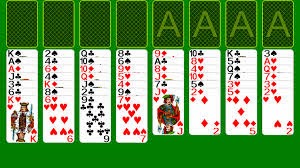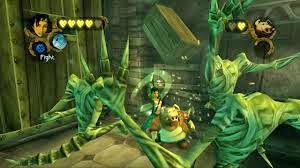During the late 80s and early 90s, one of the largest genres was the side scrolling beat 'em up. Most of them closely followed the formula established by Double Dragon in 1987. Teenage Mutant Ninja Turtles, Golden Axe, several Marvel super hero franchises, and even The Simpsons had games of the style. However, a few tried to go in their own directions. One of those games was Bad Dudes Vs. DragonNinja.
When Bad Dudes first came out, I mostly remember it as being "that fighting game that's not Double Dragon". While it never really got out of Double Dragon's shadow in terms of success or popularity, it still managed to offer a fun arcade experience that was all its own. Sure, it was obviously influenced by Double Dragon which came out a year before it, but also by the co-op shooter platformers of the time such as Konami's Contra and Rush 'n Attack before it. While Double Dragon and most of the arcade beat 'em ups that came after were played in a pseudo 3D perspective, Bad Dudes had a more traditional strict side view. What it lost in ground maneuverability, it made up for with multi-level platforming action.
The levels generally offer two platforms to play on which can be jumped between at any point, similar to Sega's classic Shinobi. These platforms are often blocked or broken, forcing the player to utilize both in order to effectively navigate through the areas. Breaking up the constant scrolling to the right, the screen sometimes shifts up or down causing the upper or lower platform to become the other. This allows levels to travel up and down hills, follow elevators between floors of buildings, and other tricks that while mundane by today's standards, were genre innovations at the time.
For added variety, Bad Dudes also has two vehicle levels. The first has you fighting on top of semi trailers as they speed down the highway, which playing it again after so many years reminded me a lot of the freeway scene it the second Matrix movie. I don't have any reason to think that the Wachowski brothers were directly inspired by Bad Dudes, but who knows? The second has you fighting on top of a moving train, paying tribute to the classic scenes in so many westerns and spy movies. Vehicle levels would later become a standard element of games in the beat 'em up genre, inspiring several memorable moments, such as the rocket skateboard level in the Teenage Mutant Ninja Turtles arcade game.
You can't review a beat 'em up game without going into detail about the combat. Bad Dudes actually has a much different combat system than most other games of the genre. Most of the enemies you'll come across can be defeated with a single hit, which is fortunate because you'll be fighting off a lot of them! It might not be the most realistic depiction of hand to hand combat in gaming, even for its time, but fending off dozens of foes at a time makes for a great fast paced arcade experience and certainly conveys a sense of power onto the player. You feel like these really are bad dudes. The controls are also less typical for the genre, with only two buttons, jump and attack, instead of the more common three button configuration with separate punch and kick buttons. Even with the somewhat limited input, the game is very context sensitive and manages to pick the most appropriate attack for the situation. There is actually an impressive number of attack moves hiding beneath the surface of the game. One thing it does lack however is any sort of block or dodge ability, but this can mostly be overcome by jumping to the other platform to avoid an enemy's attack. This move becomes increasingly useful in the many boss battles.
As powerful as the standard enemies make you feel as you punch and kick your way through the mobs of fodder, the boss fights manage to keep you humble as they keep you reaching for the next quarter. The bosses have some pretty clever designs, each one requiring a different technique to defeat. Trying to simply hack your way through them will cost you several lives and continues. My favorite was the green ninja who duplicated himself. You have to take down each of his clones before you are able to land a few punches and kicks on him, only to have him start the multiplying process all over again. Karnov, the fire breathing russian star of his own arcade classic, makes a cameo as the boss of level 1. On the NES port, one of the later bosses strongly resembles the lead character from Bionic Commando, leading me to think for years that this was another cameo. However, in the arcade version it is clear that it's just a guy swinging a long chain above his head.
I'll admit that growing up I played the NES port much more often than the actual arcade machine. Because of that, I always think of the NES sprites when remembering this game. Playing the arcade version again, I was surprised by the quality of the graphics. It's not the best looking game, but for the era it looks good. The characters are large and detailed, and the environments, while not the most inspired ever, always look like they fit the style well. The UI graphics are a letdown though. The health meter bars are blocky and look like something from an 8-bit console, and the extra lives icons could pass for Atari 2600 characters. Luckily, the constant onslaught of action keeps your eyes from wandering down to the UI for more than quick glances.
Like many action games of the late 80's, the story doesn't make much sense. The United States is in the middle of a ninja attack epidemic, culminating in the kidnapping of president Ronnie, who looks like a blond Ronald Reagan. How does the government respond to this crisis? Do they send in the Secret Service? The Marines? The FBI? The Boy Scouts? Nope, taking a page from Escape from New York, they send a pair of unarmed street fighters to punch and kick their way through the ninja forces and rescue the commander and chief of the nation with the world's largest military. What is your reward for pulling off this historical and monumental achievement? You get to go for burgers with the president while hundreds of Secret Service agents cheer. Where were these guys earlier?
The sound in Bad Dudes is a real treat. The music is on par with some of the best of the FM synth era, providing energetic tunes that keep your adrenalin up without distracting from the gameplay. But, the big winning feature has to be the digital audio sound effects. It's hard now to remember a time when sound effects in games were programmed instead of recorded, but before the SNES, that was the standard. This game uses digital recordings for the various sounds, and even a few short lines of dialog, including the "I'm bad!" sample that plays at the end of each stage to celebrate your victory over the level's boss.
Is Bad Dudes Vs. DragonNinja the greatest arcade game ever? No. Was it the best arcade game of its time? I'll have to say no again. But, it's hard to deny that it's an extremely entertaining game that will test your reflexes for a good half hour or so, and as a two player co-op title, it's a great game to load up while hanging out with a friend. The real question is, "Are you a bad enough dude?"

.jpeg)



.jpeg)

.jpeg)








.jpeg)
















.jpeg)








